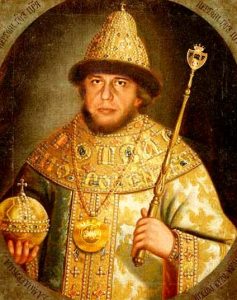(1605 – 1606)

After the death of Boris Godunov, Moscow swore allegiance to his 16-year-old son Fedor, who received an excellent education.
Outside of Moscow, there was a wobble. Basmanov, sent against the impostor, crossed with his army on his side. Fedor Borisovich and his mother were brutally murdered, the patriarch Job was overthrown, Ksenia Borisovna was tonsured. Moscow swore allegiance to the imaginary Dmitry. And in the summer of 1605, False Dmitry solemnly entered Moscow at a festive bell ringing. The whole road, the roofs of the houses were strewn with people.
The people believed that the impostor was the true son of Ivan the Terrible.
The first act of the impostor was the deposition of the patriarch Job, in whose place the archbishop of the Ryazan, the Greek Ignatius, who crowned the pretender to the kingdom, was built.
False Dmitriy returned to Moscow the disgraced boyars, including Fedor Nikitich Romanov, who was tonsured as a monk under the name of Filaret.
False Dmitry was elevated to the rank of Metropolitan of Rostov and, as a ruler, was distinguished by his talents and activities.
He attended daily meetings of the Boyar Duma, the boyars marveled at his intelligence and ability to quickly solve the most difficult cases.
He hinted to Duma people about their ignorance and expressed their desire to acquaint them with foreign countries.
He tried to bring bribes.
His reign lasted 11 months.
Frivolous self-confidence, contempt for the old Russian customs, friendship with the Poles, marriage with the Catholic Marina Mnishek, and the confidence in the people that impersonated Dmitry Tsarevich as a prince led to the fact that the boyars led by Shuisky plotted against him.
On May 17, 1606, the imposter was killed after the nun Martha had renounced him. His corpse was put up for scolding on Red Square.
Who was an impostor is unknown. Some suggest that it was an instrument of the boyars to overthrow Godunov. Russian chronicles say that the impostor Grigory Otrepiev was a monk in the Chudov Monastery.